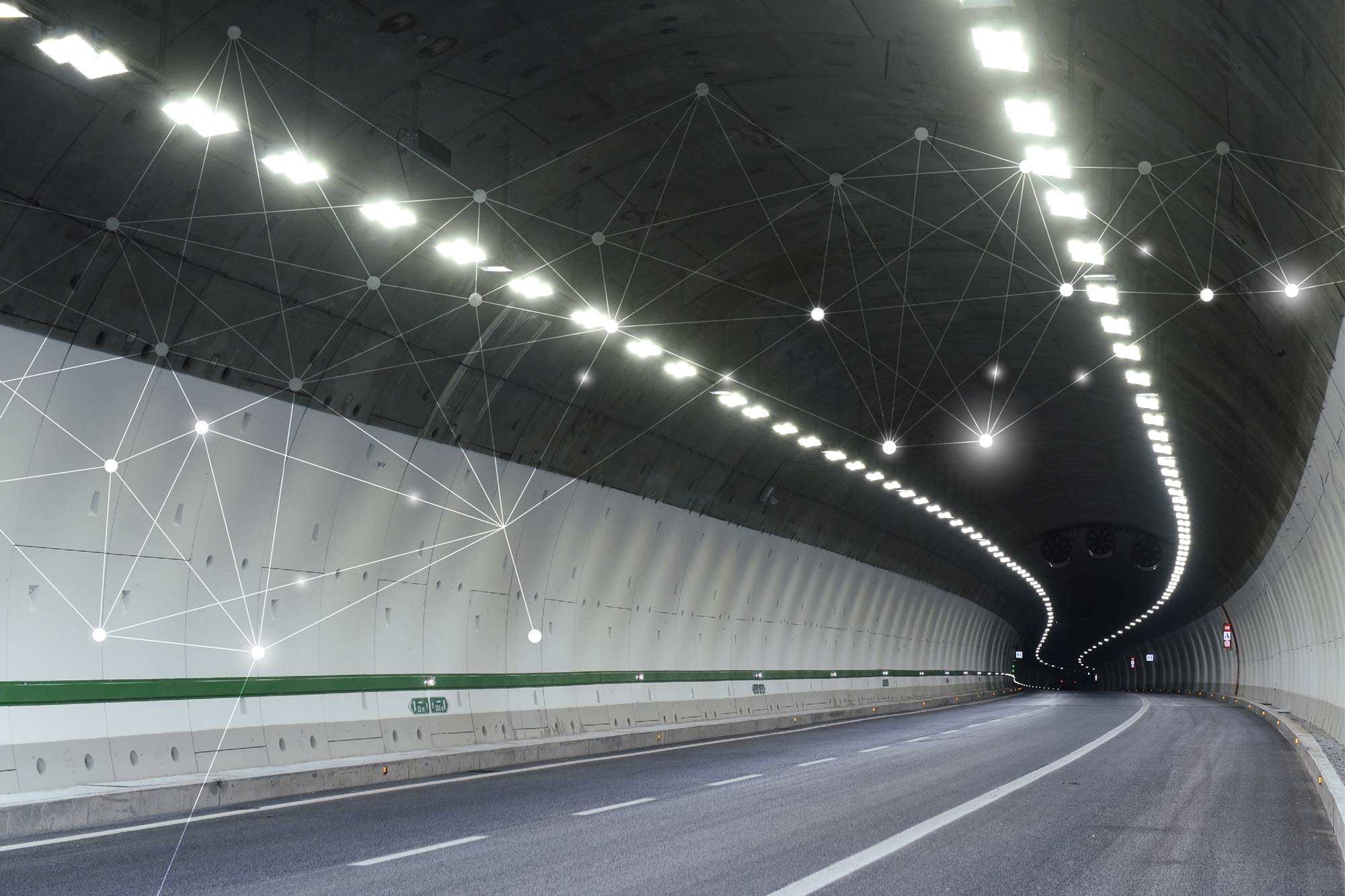BY 2024 ASPI’S INFRASTRUCTURE ASSETS WILL BE FULLY DIGITALISED
Autostrade per l’Italia continues its commitment to the development and application of new technologies on the motorway network for infrastructure monitoring. Argo, the Group’s cutting-edge platform already in use for the more than 4,000 bridges, viaducts and overpasses across the network managed by ASPI, can now also map and manage motorway tunnels. With Argo Tunnel, the system has in fact been extended to 300 tunnels of the network to cover all 600 tunnels managed by the end of 2024. By the end of the year, therefore, all the main infrastructures of Autostrade per l’Italia’s network will be digitised.
Argo Tunnel collects and manages in real time the structural data relating to the assets also thanks to the support of the latest technology which can create a digital twin of each infrastructure, for example through laser scanner surveys. The in-depth knowledge and the constant updating of information guarantee an all-round view of bridges, viaducts and tunnels. Thanks to the platform, inspectors are helped to carry out a more precise analysis during inspections, verifying the compliance of results with the parameters identified by the latest ministerial guidelines. This is a remarkable amount of information, considering that for the 600 tunnels of the ASPI network alone, more than 2,500 on-site inspections are carried out each year. Thanks to the same information, the operator can also optimise the planning of any activities for the infrastructure, which will also benefit the progress of the impressive modernisation plan launched by the Group on all assets.
More generally, the ARGO platform, created by Movyon, a leader in the development and integration of Intelligent Transport Systems solutions and a centre of excellence for research and innovation in the Autostrade per l’Italia Group, ensures maximum transparency, making all the information entered simultaneously available to the technical departments and dialoguing with the Ministry of Transport and Infrastructure’s Public Assets Computer Archive.
With a view to ensuring a virtuous infrastructure life cycle and an ever deeper knowledge of the managed assets, ASPI has also developed a dynamic infrastructure monitoring system. The project, which is partly financed by the Complementary National Plan (PNC), enables remote monitoring through IoT sensors installed on bridges, viaducts and tunnels. The sensor system is capable of obtaining in-depth knowledge of infrastructures, analysing their responses and behaviour in the event of actions by external agents. The study ranges from analysing the evolutions of strategic infrastructure components subjected to increasingly heavy traffic loads, to monitoring the responses of single assets affected by severe atmospheric events, such as high temperatures and hydrogeological disruptions.
The works selected within the project also respond to a preponderant typology on the ASPI network, so the study carried out on a single viaduct allows the findings to be used on other bridges built according to the same design scheme.
The results of the sensor monitoring also feed into the Argo ecosystem, further enriching the information. The implementation of the plan was entrusted to two ASPI’s subsidiaries: Tecne designed the system layout, establishing what to monitor and where and analysing the data. Movyon designed and installed the monitoring systems, and developed the platform and control room. The ultimate goal is to have digital remote monitoring for 1,246 tubes and tunnel segments, totalling around 100 bridges/viaducts and tunnels.
‘The investment in technological innovation represents a strategic step in our development plan, not only for the services we offer and will be able to offer our users, but because it is a valuable tool for the management and progress of the major network regeneration programme. Our infrastructures have a very high value for the country’s mobility because they guarantee its interconnection systems, with transits that in some points reach up to 200,000 vehicles per day, values much higher than the European average. Technology today, through sensor monitoring and digitisation, allows us a comprehensive knowledge of our infrastructure assets. Only with this knowledge are we able to optimise the interventions that each of them requires, planning activities with foresight and limiting the impact on the usability of the network and therefore on the mobility of people and goods in our territories,’ stated the Chief Executive Officer of the Autostrade per l’Italia Group, Roberto Tomasi.
